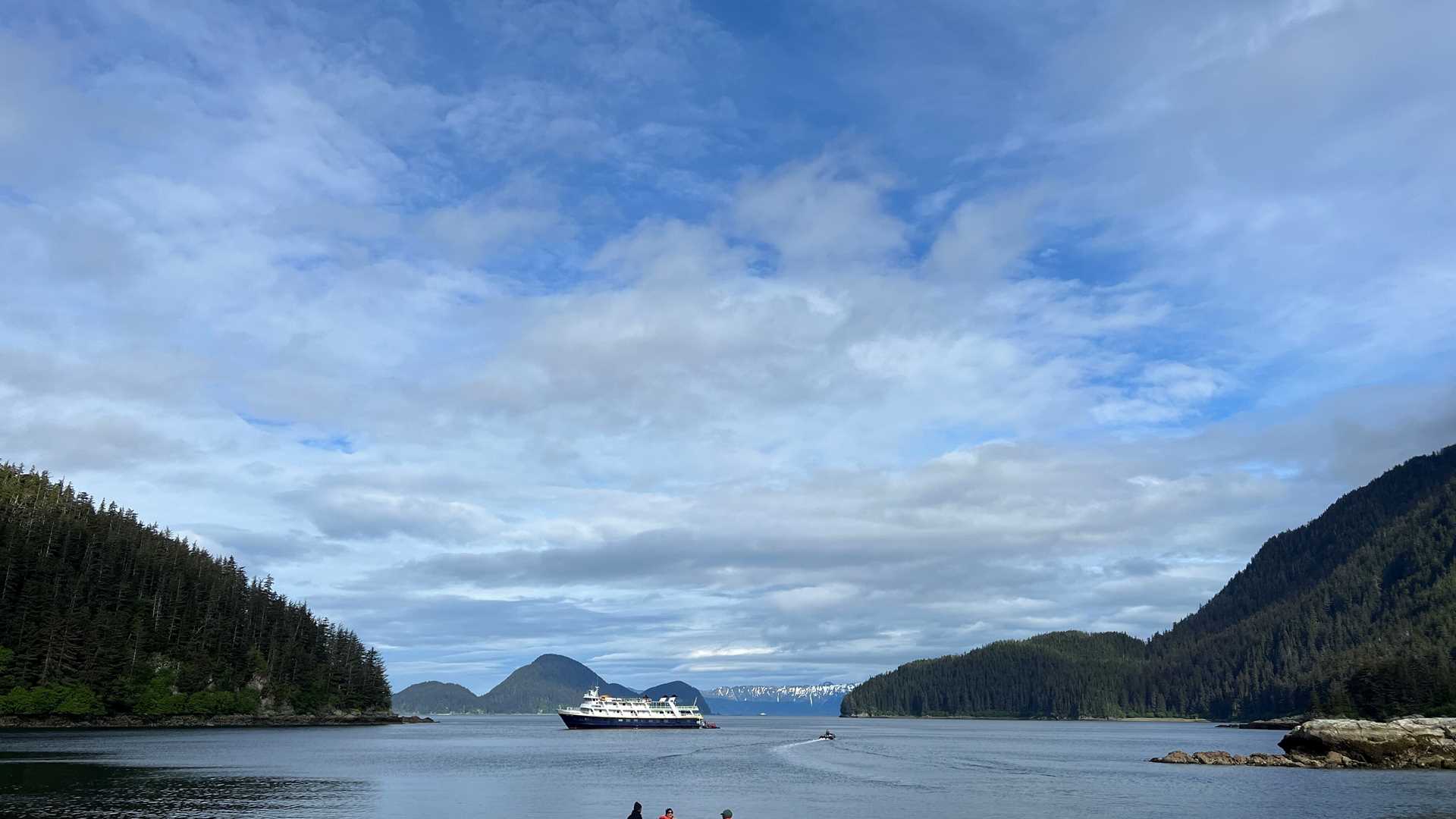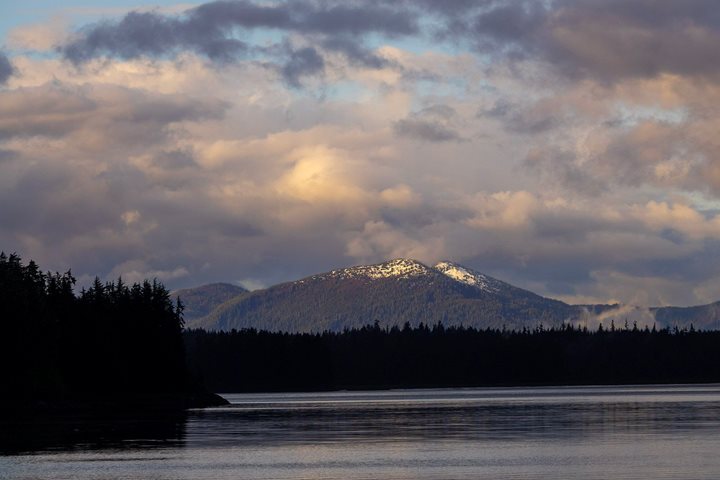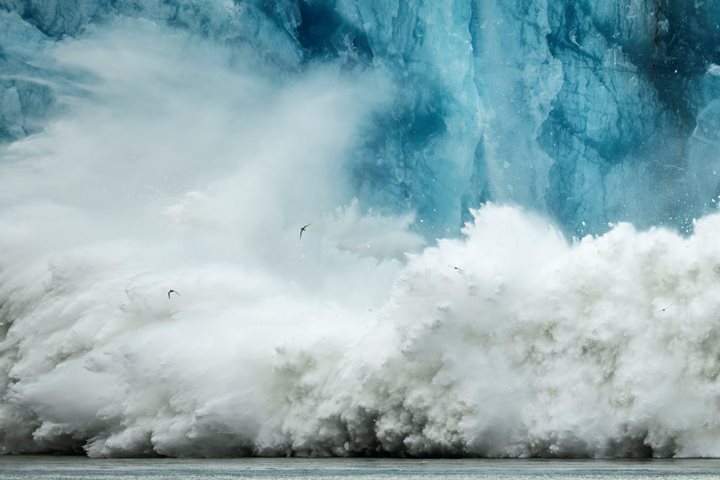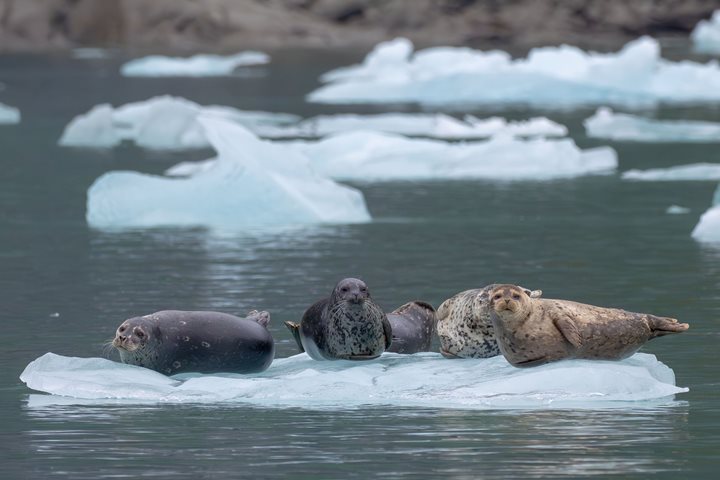Along the remote, northwestern edge of Southeast Alaska, our expedition took us on a journey to the mystical Salt Chuck Bay. We embarked on a day of exploration into the forests and up a hill to a remote muskeg, where shore pines sat in an open, mossy clearing. Since it was low tide, we ventured across the intertidal zone which revealed its secrets, unveiling a hidden world teeming with vibrant marine life. But our adventure didn't stop there. Guided by the call of adventure, we glided through the pristine waters of Salt Chuck Bay, our kayaks silently slicing through the mirrored surface. After lunch, we boarded Zodiacs to venture closer to the shorelines of this archipelago. Within a few minutes, amidst the grandeur of nature, we were greeted by an unforgettable sight – humpback whales feeding and diving against the backdrop of rugged cliffs and breaking waves. Steller sea lions basked lazily on rocky outcrops and hunted for fish in the pass as the current ripped and whirled underneath our boat. “I have no words,” proclaimed someone in our Zodiac. The unyielding beauty and enchantment that can be found within the heart of Alaska's untamed wilderness were in full force today.
- Daily Expedition Reports
- 07 Jun 2023
Southeast Alaska, 6/7/2023, National Geographic Sea Lion
- Aboard the National Geographic Sea Lion
- Alaska
Ross Weinberg, Videographer
Born in Hollywood with a camera in his hand, Ross is a documentary filmmaker and photographer who is inspired by a good-organic-wholesome-LA-vegan cause and strives to raise awareness wherever he can through his pictures and films. While majoring in ...
Read MoreShare Report
Alaska Escape: LeConte Bay, Wrangell and Misty Fjords
VIEW ITINERARYRelated Reports
5/29/2025
Read
National Geographic Sea Bird
Endicott Arm
Dawes Glacier, located at the head of Endicott Arm in Southeast Alaska, is an active tidewater glacier in the remote Tracy Arm-Fords Terror Wilderness Area. Reaching the glacier requires a 30-mile journey through a narrow fjord lined with sheer rock walls rising over 3,000 feet. These cliffs are veined with waterfalls and often blanketed in mist. Throughout the fjord, remnants of the glacier float in the form of icebergs. The glacier feeds cold, silty meltwater into the fjord, giving the water a distinctive milky-green hue and supporting a rich marine food web. Harbor seals were hauled out on ice floes near the glacier. Gulls and Arctic terns were actively feeding, likely drawn by the small fish and plankton concentrated by the glacial outflow. The glacier calved several times, hurling large chunks of ice across the water’s surface, sending the birds fleeing. The sound of the ice hitting the water echoed off the steep rock walls that rise thousands of feet on either side.
5/27/2025
Read
National Geographic Sea Bird
Dawes Glacier in Endicott Arm
We could not have asked for a better way to end the expedition. Our last day was amazing! Visiting Dawes Glacier in Endicott Arm was a highlight with its crystal-blue ice and resting harbor seals floating by on the ice. In the evening, we even got to see a couple of humpback whales off the bow of the ship. We ended the day by watching images of the beautiful moments created on our expedition during the famed guest photo slideshow.







